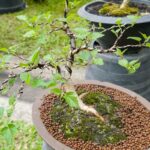Many different bonsai trees offer white flowers! These trees include Gardenias, Azaleas, Magnolias, Prunus Mumes, Apples, Jasmines, Wisterias, and Lilacs. However, there are many more bonsai trees with blooms in varying shades of white.
Bonsai trees can bloom in all sorts of colors!
You treat flowering trees the same as others when styling them.
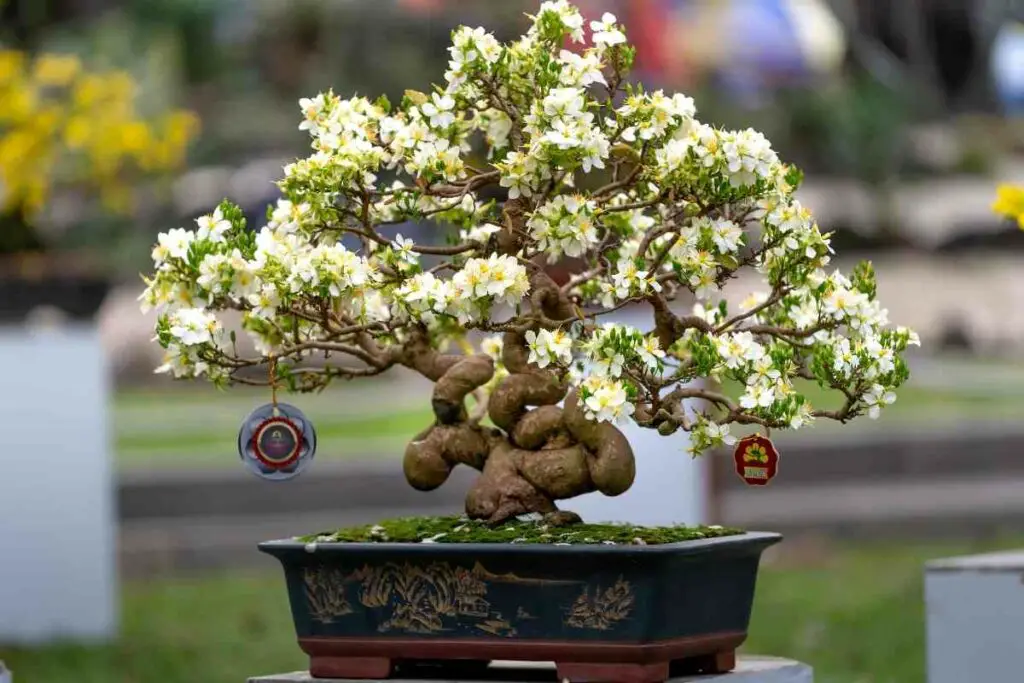
Although there are a few minor changes you’ll need to make to get the best possible flowers.
White flowers are very popular because of their tranquil appearance.
Table of Contents
What Bonsai Trees Have White Flowers?
There are so many different bonsai trees that offer white flowers!
Since bonsai trees are regular trees styled in specific ways, any tree that offers white blooms can fit in this category.
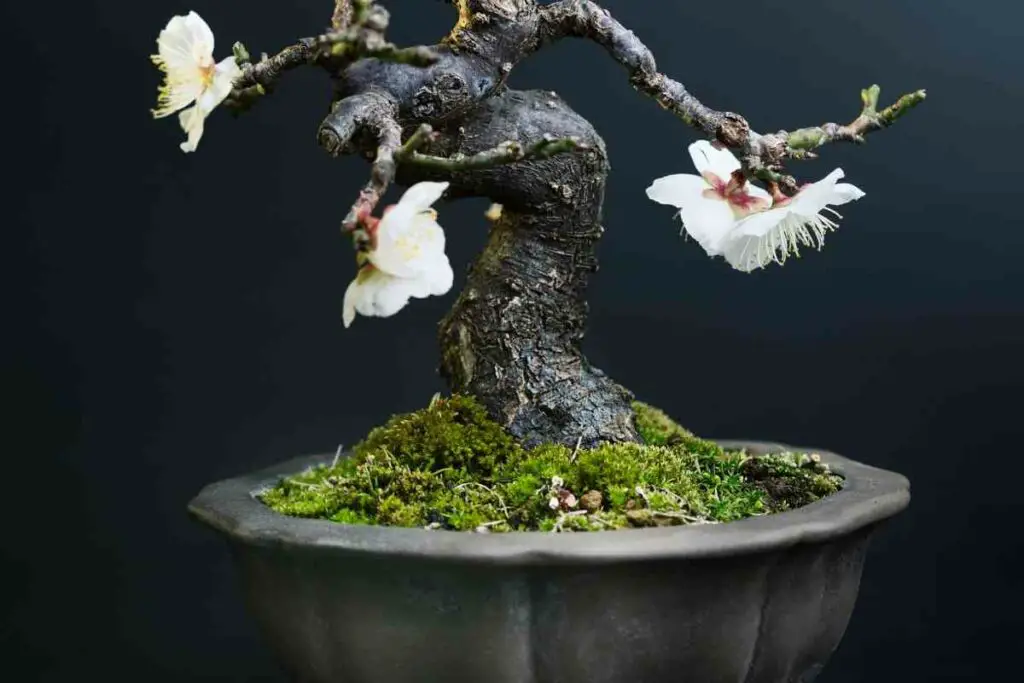
These trees also provide flowers in light pink, yellow, and purple shades.
Below are some of the most popular bonsai trees that offer white flowers.
Remember that these trees may also offer blooms in different shades, so confirm you’re getting the seeds from a tree that only produces white flowers first!
1. Gardenia Bonsai Trees
Gardenia bonsai trees produce stunning, pure white flower blossoms!
These bonsai begin blooming in late spring and continue flowering throughout the summer.
The gardenia flower symbolizes gentleness and purity, making it perfect for helping you relax.
If you want to help your gardenia tree flower, you should keep it in direct sunlight up to four hours a day during the flowering season.
It also needs to stay between 70 and 80 degrees Fahrenheit.
Overall, this tree is beautiful, and what first comes to mind when we think of white flowers on a bonsai tree!
2. Azalea Bonsai Trees
Azalea bonsai trees offer primarily white flowers, with a touch of pink in them.
They bloom between October and June and can bloom multiple times a year!
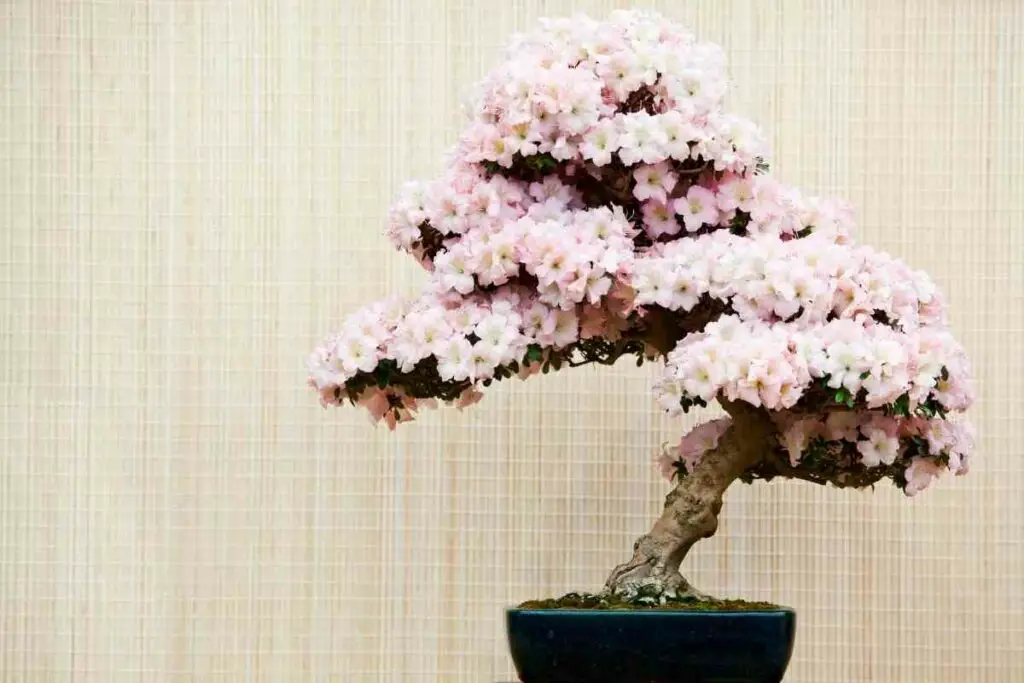
The azalea flower symbolizes femininity, beauty, and vulnerability.
You can help the azalea bonsai flower by ensuring it’s not root-bound.
Then, give it plenty of indirect sunlight.
You don’t want it in the sun during the hottest part of the day!
3. Magnolia Bonsai Trees
Magnolia flowers have a unique shape- they’re long and narrow, with a yellow stem.
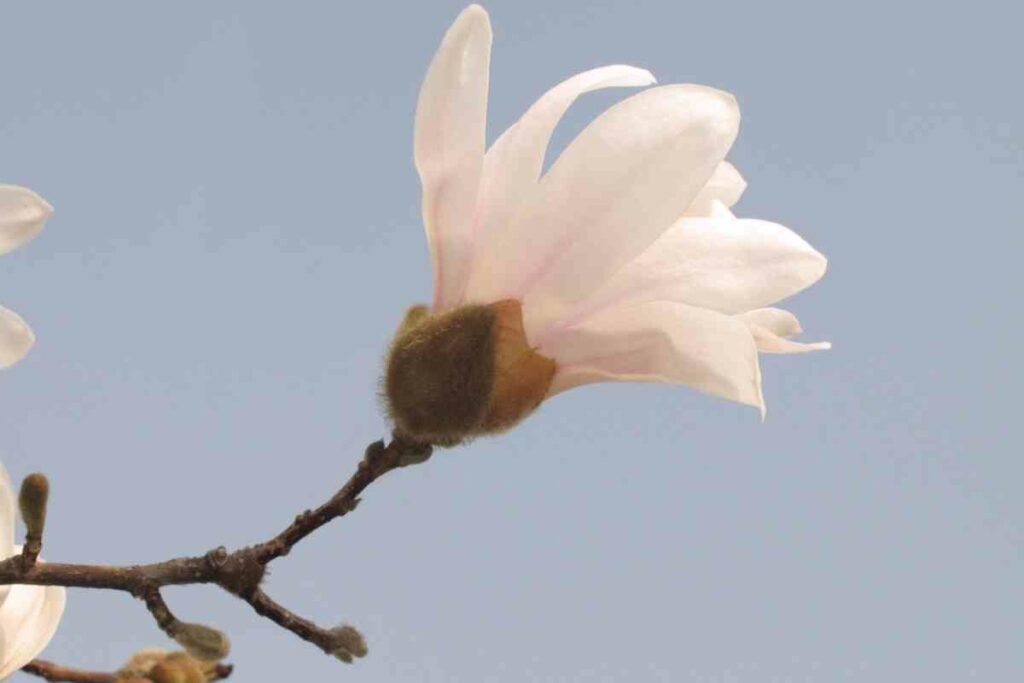
These blooms represent balance and harmony, as well as wealth!
The flowers have a wonderful scent that can quickly fill a room.
You can expect them to appear in early spring, as long as you take care of the tree well.
These flowers don’t last as long, usually sticking around for a few weeks at a time.
4. Prunus Mumes (Cherry Blossom) Bonsai Trees
The Prunus Mumes, or Japanese cherry blossom tree, is another very popular flowering bonsai!
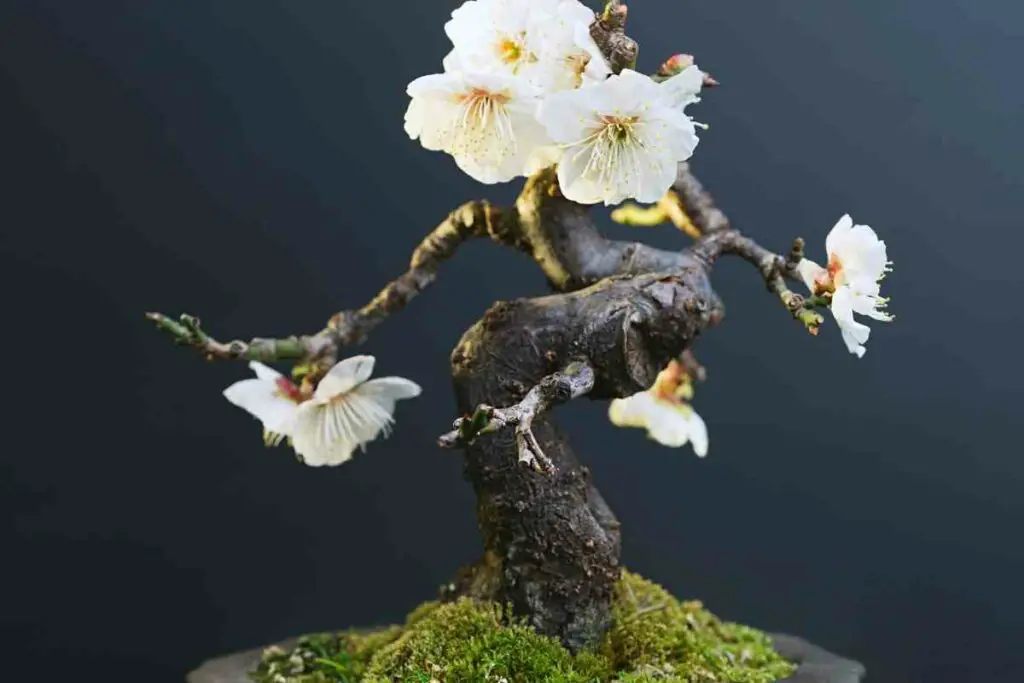
The petals appear in late February or March and have a pinkish tint.
These flowers also symbolize destiny, karma, and mortality- encourage you to live in the moment!
Prune the tree when it finishes flowering. Doing so encourages the branches to produce more flowers each time it blooms.
5. Apple Bonsai Trees
Apple trees can produce beautiful, fragrant white blooms as well.
They are usually pure white or contain some pink.
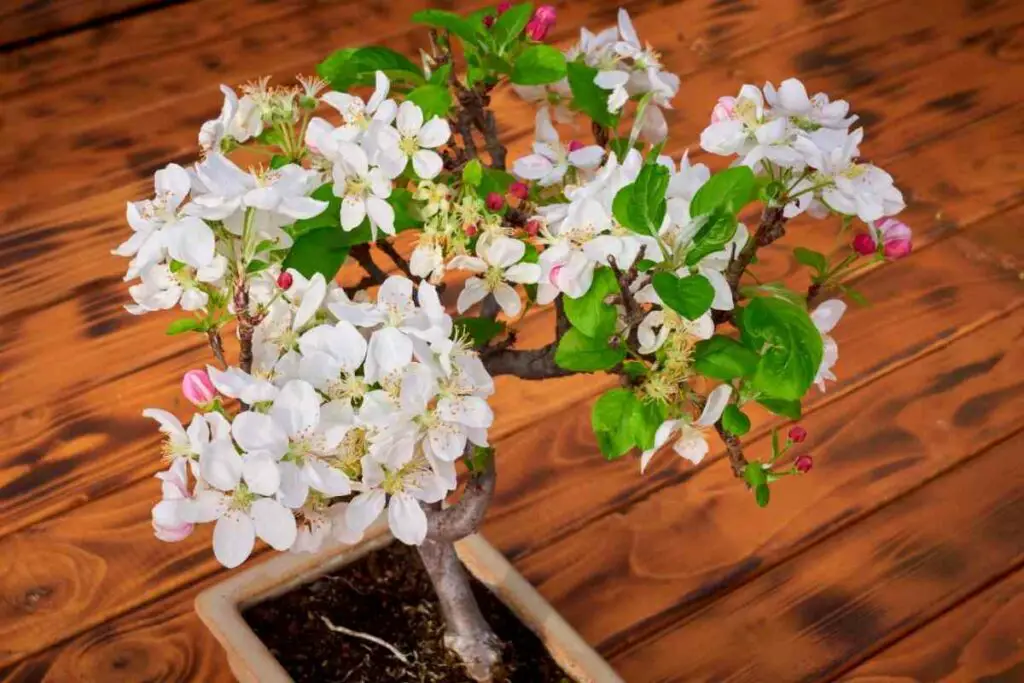
You can expect them to bloom in the summer, with small fruits following!
The apple blossom represents long life and is very popular in springtime flower arrangements.
Apple bonsai trees are also perfect for styling.
They are solid and resilient, making them the ideal white flowering bonsai for beginners.
6. Jasmine Bonsai Trees
When indoors, you can get a Jasmine bonsai to produce beautiful white blooms continuously.
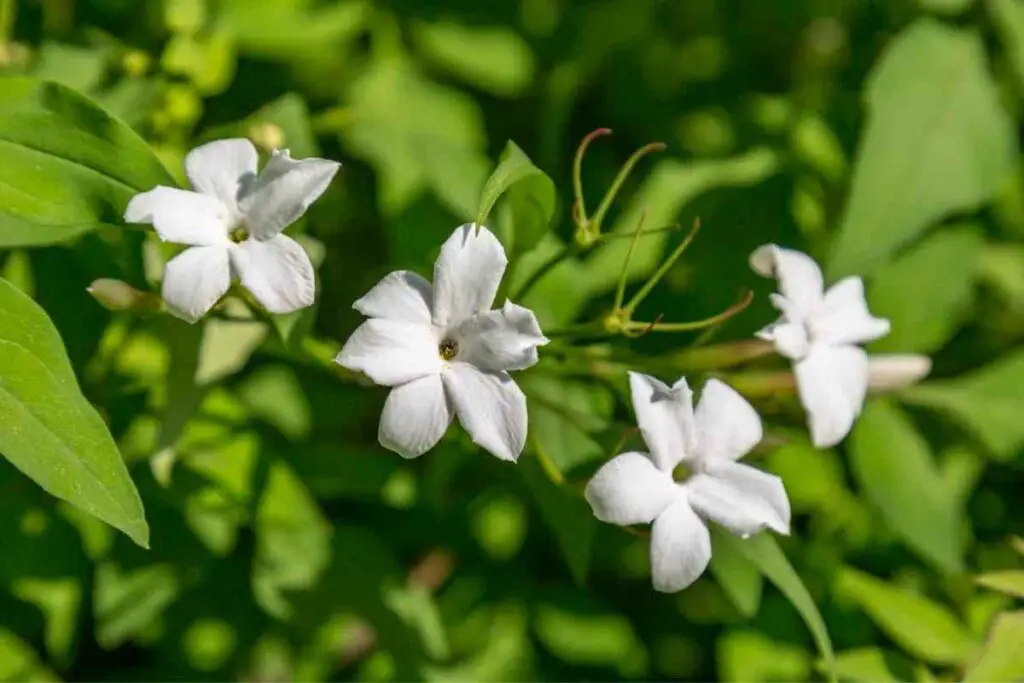
The flowers symbolize innocence and good luck, making them popular in baptisms and weddings.
If you want your jasmine bonsai to bloom, you should keep it in direct sun for four to six hours each day.
They also require a lot of humidity!
7. Wisteria Bonsai Trees
If you want a wisteria bonsai to flower, you’ll want to let it become root-bound.
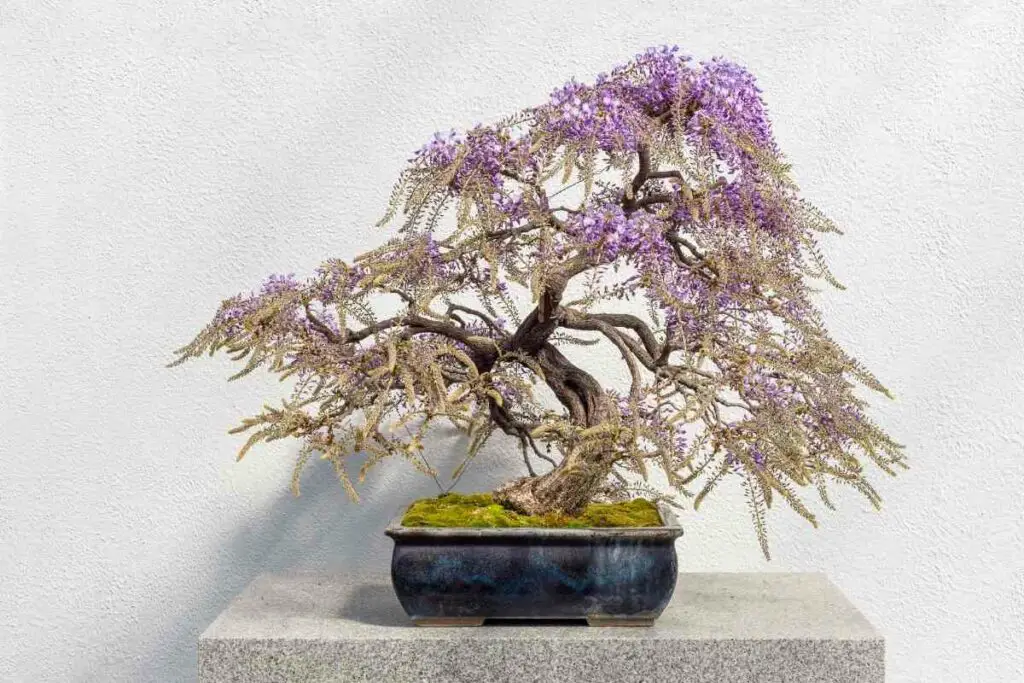
Root binding causes the tree to enter a mature, growing phase, encouraging it to flower!
These white flowers represent:
- fertility
- creativity
- love
- and long life
The blooms usually appear in May and June and are whitish pink.
Many people love the look of these flowers since they have a beautiful cascading look.
You’ll want to make sure the plant gets a lot of sunlight for it to bloom!
8. Lilac Bonsai Trees
Lilac bonsai produces Japan’s national flowers, making them sacred.

The flowers symbolize strength, female beauty, and renewal.
You can expect the lilac bonsai to bloom in the middle of May.
They produce a ton of very fragrant blooms! You can style this tree in a variety of ways too.
While the lilac bonsai usually produces light purple blooms, you can find varieties with crystal white blossoms- make sure you know before buying the seed!
How Do I Care For Flowering Bonsai Trees?
You should care for a flowering bonsai tree in a very similar way to a non-flowering tree.
You will want to make sure you use a special fertilizer, however.
Growing blossoms requires more nutrients, so you want to use soil with plenty of nutrition and low nitrogen levels.
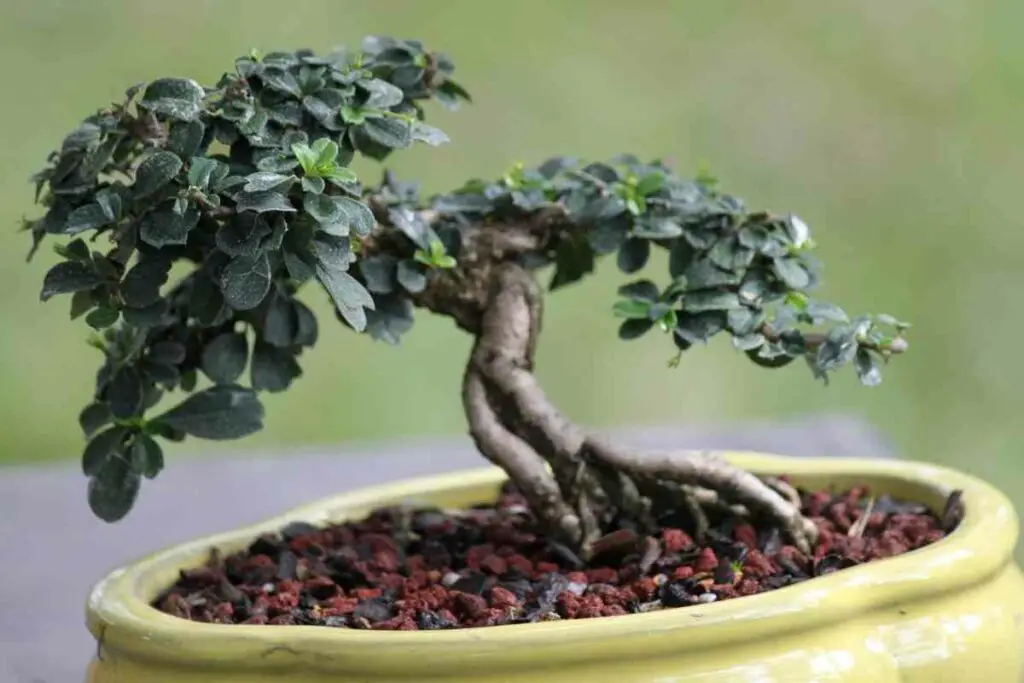
You’ll also need to pay more attention to the soil. Flowering bonsai trees may need more water than usual when in full bloom.
Plus, they need more sunshine when developing their flowers.
It’s also good to keep the flowers dry since being wet can cause them to wilt or fall off early.
Finally – You can prune them in the same way as non-flowering bonsai. However, you shouldn’t cut them when the flowers are in full bloom! Wait until they fall off, then resume pruning like normal.
How Long Until Bonsai Trees Flower?
Bonsai trees can take between 10 and 15 years to reach maturity- which is quite a commitment! They won’t flower until they’ve reached this point.
However, you can still find plenty of bonsai trees to buy that are already mature enough to flower.
If you want to grow a bonsai from a local seed, don’t let the amount of time until flowering stop you!
Growing your tree from the ground up is very rewarding.
Also Helpful
- How to Dry Basil Leaves: A Professional Guide
- Is an Avocado a Fruit or Vegetable? Simple Answer and Explanation
- Does Pineapple Have Seeds? Exploring the Anatomy of Pineapples
- Blooming Through Winter: Can I Grow Vegetables Indoors in the Winter?
- What Can You Grow in a Greenhouse All Year Round: A Guide to Year-Round Greenhouse Gardening
- Are Blueberries Blue? Debunking the Myth of Their Color













